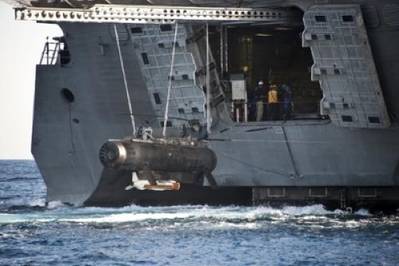Raytheon Get US$35-Million Navy LCS Sonar Contract
Raytheon Company says it is to provide the U.S. Navy with AN/AQS-20A minehunting sonar systems and equipment. The system leverages advanced sonar technologies to support the Navy's critical minehunting missions, ensuring safe access and passage for military and civilian vessels on the world's oceans and waterways.
Deployed from the Littoral Combat Ship (LCS) as the variable depth sonar for the AN/WLD-1 Remote Minehunting System (RMS), the AN/AQS-20A system is towed undersea to scan the water in front, below and to the sides of the vehicle for anti-shipping mines.
"An essential component of LCS, AN/AQS-20A advances the capability of the ship's mine countermeasure arsenal," said Kevin Peppe, vice president of Seapower Capability Systems for Raytheon's Integrated Defense Systems business. "Enhanced to optimize detection – in both range and accuracy, AN/AQS-20A provides the Navy with the advantage they need to safely detect and effectively identify these undersea threats."
This contract includes options which, if exercised, would bring the cumulative value of this contract to $199,692,601. The majority of the work will be performed at Raytheon's Portsmouth, R.I. facility with support and contributions from other Raytheon business areas as well as a host of large and small business supplier partners.
Raytheon explain that the AN/AQS-20A is a critical element of the U.S. Navy's mine countermeasure capability, and the only minehunting sonar sensor developed, tested and certified for Remote Multi Mission Vehicle (RMMV) deployment. It is the most advanced and capable mine warfare sensor system, fully integrated with and effectively operated from the RMMV, now successfully deployed from LCS 2.
The AN/AQS-20A system is towed undersea to simultaneously scan the water column for anti-shipping mines forward of, to the sides, and beneath the vehicle. Sophisticated sonar, electro-optical sensors, and high-precision location information are used to provide high-resolution images of mines and mine-like objects.














